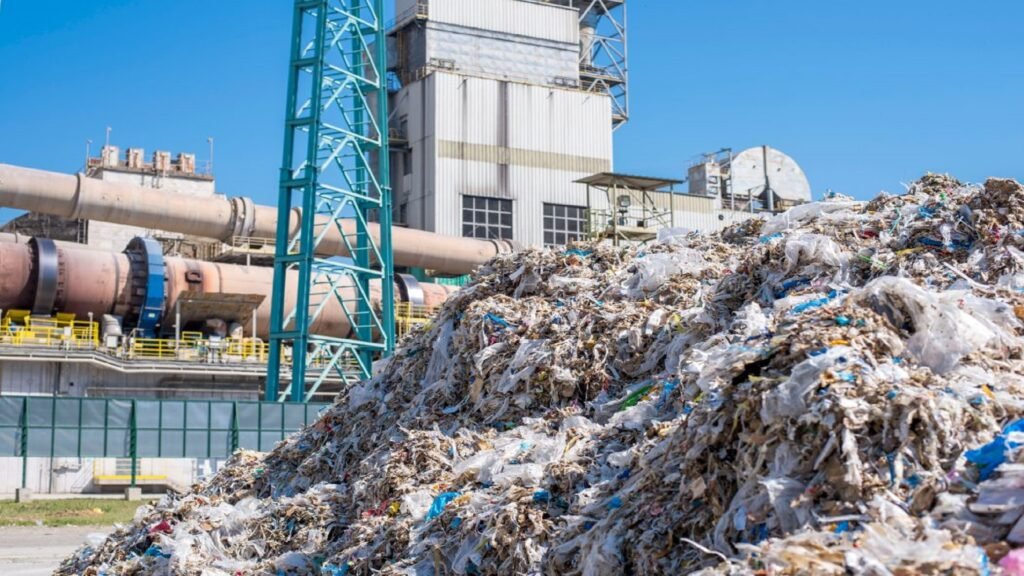Disposing of industrial waste is a critical aspect of maintaining environmental sustainability and operational efficiency. Proper waste management ensures compliance with legal standards and minimizes the negative impact on the environment. Various types of industrial waste, including hazardous, non-hazardous, and recyclable materials, require different handling procedures.
Companies should conduct thorough waste audits to identify and classify waste types accurately. Effective disposal methods include recycling, incineration, and landfilling, each suited to specific waste categories. Collaborating with certified waste management services can help businesses adhere to regulations and adopt eco-friendly practices. Implementing a robust waste disposal strategy not only protects the environment but also enhances corporate responsibility and community relations.
Types Of Industrial Waste
Industrial waste poses a big problem. Proper disposal is key to keeping our environment safe. There are different types of industrial waste, and each needs a special way to handle. This article will explain the main types: solid waste, liquid waste, and hazardous waste.
Solid Waste
Solid waste includes items like plastic, metal, and paper. Factories often produce a lot of this waste. It is important to sort and recycle as much as possible. Recycling reduces the amount of waste that ends up in landfills.
Here are some common methods to dispose of solid waste:
- Recycling: This involves converting waste into reusable materials.
- Composting: Organic waste can turn into compost for farming.
- Landfills: Waste that cannot be recycled often goes to landfills.
- Incineration: Burning waste can reduce its volume but may cause pollution.
Proper sorting is crucial. Factories should have clear bins for different types of waste. Workers need training on how to sort waste properly. This ensures that recyclable materials do not end up in landfills.
Liquid Waste
Liquid waste includes chemicals, oils, and wastewater. Factories often produce this type of waste during manufacturing processes. Proper treatment is necessary before disposal.
Here are some methods to manage liquid waste:
- Neutralization: Chemicals are treated to make them safe.
- Filtration: Wastewater is filtered to remove contaminants.
- Evaporation: Water is evaporated, leaving solid waste behind.
- Disposal: Treated water is safely released into the environment.
It is important to store liquid waste in proper containers. Leaks can cause serious environmental damage. Factories should have emergency plans in case of spills. Regular inspections help to prevent accidents.
Hazardous Waste
Hazardous waste includes toxic chemicals, batteries, and medical waste. This type of waste poses serious health risks. Special care is needed to handle and dispose of it.
Here are some methods:
- Containment: Storing waste in secure containers prevents leaks.
- Incineration: Burning hazardous waste can destroy harmful chemicals.
- Landfills: Special landfills are designed for hazardous waste.
- Recycling: Some hazardous materials can be recycled safely.
Proper labeling is essential. Containers should have clear labels to identify the type of waste. Workers should wear protective gear when handling hazardous waste. Factories need to follow strict regulations to ensure safety.
Regulatory Framework
Industrial waste can be harmful if not disposed of properly. It includes chemicals, metals, and other hazardous materials. Proper disposal is crucial to protect the environment. The regulatory framework ensures industries follow the rules. This framework includes local, national, and international guidelines.
Local Regulations
Each city or town may have its own rules for disposing of industrial waste. These rules ensure local environments stay safe. Businesses must follow these rules to avoid fines and penalties.
Local regulations may include:
- Permits for waste disposal
- Inspections by local authorities
- Specific waste disposal sites
- Recycling requirements
Permits are often needed to dispose of hazardous waste. Authorities check if businesses follow safety protocols. Inspections help ensure compliance with local laws. Specific sites are designated for safe waste disposal.
Recycling is encouraged to reduce waste. Some local laws require businesses to separate recyclable materials. Proper documentation is also necessary. This helps track waste from creation to disposal.
National Laws
National laws set the standard for waste disposal across the country. These laws protect the environment and public health. Businesses must comply with these laws to operate legally.
Key aspects of national laws include:
- Waste classification
- Disposal methods
- Reporting requirements
- Penalties for non-compliance
Waste is classified into different types, such as hazardous and non-hazardous. Each type has specific disposal methods. Proper methods prevent environmental damage. Businesses must report their waste disposal activities. Reports ensure transparency and accountability.
Penalties are imposed for not following the laws. These can include fines or even shutdowns. National laws are often stricter than local regulations. This ensures a high standard of safety and environmental protection.
International Guidelines
International guidelines help maintain global standards. These guidelines ensure that industrial waste disposal does not harm the planet. They are often created by organizations like the United Nations.
International guidelines cover:
- Best practices for waste disposal
- Environmental impact assessments
- Global reporting standards
- Cross-border waste management
Best practices are recommended for safe disposal. These practices are based on scientific research. Environmental impact assessments are required to understand the effects of waste disposal. Assessments help in planning and mitigating negative impacts.
Global reporting standards ensure consistent documentation. Businesses must report their waste management practices. This helps in comparing and improving global standards. Cross-border waste management involves transporting waste between countries. This must be done safely to prevent environmental harm.
Disposal Methods
Industrial waste can harm the environment. It is important to dispose of it properly. There are different methods to do this. This blog will talk about three main methods: landfill disposal, incineration, and recycling.
Landfill Disposal
Landfill disposal is a common method for industrial waste. Waste is buried in the ground. This method is simple and low-cost. But it can cause pollution.
Pros of Landfill Disposal:
- Low cost
- Simple process
- Can handle large amounts of waste
Cons of Landfill Disposal:
- Causes soil and water pollution
- Takes up large areas of land
- Produces methane gas
Precautions to take:
- Use liners to prevent leaks
- Monitor groundwater for pollution
- Cover waste to reduce odors
Incineration
Incineration involves burning waste at high temperatures. This method reduces waste volume. It also destroys harmful substances. But it can release toxic gases.
Pros of Incineration:
- Reduces waste volume
- Destroys harmful chemicals
- Produces energy
Cons of Incineration:
- Releases toxic gases
- High cost
- Requires special equipment
Precautions to take:
- Use filters to reduce emissions
- Monitor air quality
- Handle ash safely
Recycling
Recycling converts waste into new products. This method saves resources. It also reduces pollution. Recycling is good for the environment.
Pros of Recycling:
- Saves raw materials
- Reduces pollution
- Creates jobs
Cons of Recycling:
- Requires sorting
- Can be costly
- Not all waste is recyclable
Steps to recycle:
- Sort waste by type
- Clean and process materials
- Convert into new products
Best Practices Disposing of industrial waste
Industrial waste disposal is crucial for a clean environment. Following best practices helps in reducing harm to nature. Proper methods ensure safe disposal and compliance with regulations. This article discusses some of the best practices for industrial waste disposal.
Waste Minimization
Waste minimization is the first step in managing industrial waste. It involves reducing waste at its source. Less waste means less disposal and treatment costs.
Here are a few effective ways to minimize waste:
- Use raw materials efficiently to reduce leftover waste.
- Recycle and reuse materials where possible.
- Implement lean manufacturing techniques to streamline production.
- Regular maintenance of machinery to prevent waste from breakdowns.
By adopting these practices, companies can significantly lower their waste output. This not only helps the environment but also boosts the company’s efficiency.
Segregation Techniques
Segregation of waste is another important practice. It involves separating different types of waste. Proper segregation makes treatment and disposal easier.
Here are some common techniques:
| Type of Waste | Segregation Method |
| Hazardous Waste | Store in labeled, leak-proof containers. |
| Recyclable Waste | Separate based on material type (plastic, metal, etc.). |
| Organic Waste | Use composting bins. |
| General Waste | Place in regular waste bins. |
Proper segregation helps in efficient processing. It also prevents contamination, making recycling easier and more effective.
Employee Training
Employee training is vital for proper waste management. Workers must understand the importance of waste disposal. They should know how to handle different types of waste. Training ensures everyone follows the correct procedures.
Here are some key points for training:
- Educate employees about the types of waste and their hazards.
- Demonstrate proper segregation and storage techniques.
- Provide personal protective equipment (PPE) and train on its use.
- Conduct regular refresher courses to keep everyone updated.
Well-trained employees contribute to a safer and cleaner work environment. They ensure compliance with waste management regulations and reduce the risk of accidents.
Future Trends
The disposal of industrial waste is a critical issue. Proper disposal methods are necessary to protect the environment. New trends are emerging to manage industrial waste better. These trends focus on sustainability and innovation. This blog post explores the future of industrial waste disposal. It looks at sustainable practices, technological innovations, and the circular economy.
Sustainable Practices
Sustainable practices in waste disposal are gaining traction. Companies are adopting eco-friendly methods. These methods aim to reduce environmental impact. They also ensure compliance with regulations.
Here are some key sustainable practices:
- Recycling and Reusing: Converting waste into reusable materials. This reduces the amount of waste sent to landfills.
- Waste-to-Energy: Using waste to generate energy. This helps in reducing the reliance on fossil fuels.
- Biodegradable Waste Management: Treating organic waste to produce compost. This helps in enriching the soil.
Implementing these practices can benefit businesses. They can save costs and improve their public image. They also contribute to a healthier environment.
Technological Innovations
Technological innovations are transforming waste disposal. New technologies help in efficient waste management. They also reduce the environmental impact of waste.
Some notable innovations include:
- Automation: Automated systems for sorting and processing waste. These systems increase efficiency and accuracy.
- Smart Bins: Bins equipped with sensors. They provide real-time data on waste levels. This helps in optimizing waste collection routes.
- Advanced Treatment Technologies: Techniques like pyrolysis and gasification. These convert waste into useful products like fuel and chemicals.
These innovations are making waste disposal more effective. They also help in conserving resources. Businesses can leverage these technologies for better waste management.
Circular Economy
The circular economy is a model for sustainable growth. It focuses on keeping resources in use for as long as possible. This reduces waste and environmental impact.
Key principles of the circular economy include:
- Designing for Longevity: Creating products that last longer. This reduces the need for frequent replacements.
- Resource Recovery: Extracting valuable materials from waste. This promotes recycling and reduces the need for new resources.
- Regenerative Practices: Restoring and renewing natural systems. This helps in maintaining ecological balance.
Adopting a circular economy can have several benefits. It can lead to cost savings and new business opportunities. It also promotes sustainable development and environmental conservation.
Conclusion
Proper disposal of industrial waste protects the environment and ensures regulatory compliance. Follow safe methods and utilize licensed services for waste management. Educate your team on best practices to minimize risks. By staying informed and proactive, your business contributes to a cleaner, safer planet for future generations.







